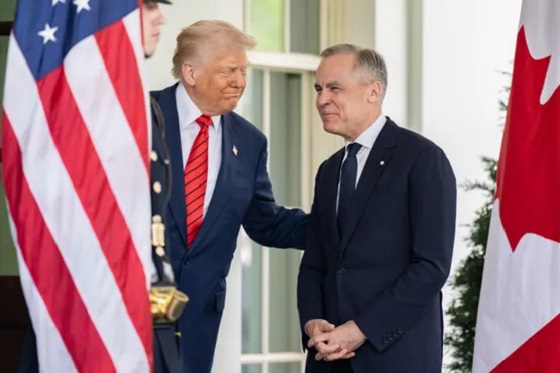Business
Bank of Canada Flags Challenges Amid Absence of Federal Budget
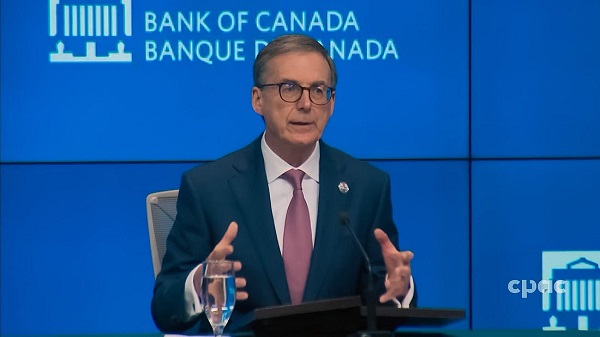

 Dan Knight
Dan Knight
Governor Tiff Macklem signals the central bank is flying blind as Mark Carney’s Liberal government withholds fiscal plans, leaving Canadians to face rising prices and economic uncertainty.
The Bank of Canada—yes, the people in charge of stabilizing your currency, protecting your savings, and guiding the economy through the storm—held a press conference. The takeaway? They have no idea what’s going on.
If you missed it, Governor Tiff Macklem stood at the podium and told Canadians, with a straight face, that the Bank is keeping interest rates unchanged at 2.75%. Now, if you’re expecting that decision to come with some clarity, a plan, maybe even a roadmap for the months ahead—don’t hold your breath.
Why? Because Macklem said the Bank’s navigating ‘unusual uncertainty’ from U.S. trade moves, and they’re too unsure to pin down a forecast. Instead, they’re waiting for more numbers to make sense of the mess.
Just pause and think about that for a second. The central bank of one of the wealthiest nations on Earth—tasked with steering the economy—is flying blind.
But don’t worry, we were told. A rate cut might come in July. Maybe. Depending on how inflation behaves. Depending on how the economy holds up. Depending on a whole list of things no one can actually predict right now. Macklem says it depends on inflation being “contained.” But look around—consumer spending is falling, housing is slowing down, and people are losing jobs in sectors tied to trade. And he knows it.
He said, “The second quarter is expected to be much weaker.” Why? Because the growth we saw earlier this year was a mirage. Canadian companies rushed to export goods before U.S. tariffs hit. That inflated Q1 GDP to 2.2%. Now the adrenaline is gone and reality is setting in.
He didn’t say we’re in trouble. But he didn’t need to. When your central banker says growth was “pulled forward” and Q2 will be “much weaker,” he’s telling you the economy is already running on fumes.
And then there’s inflation. Now, according to the headlines, inflation dropped to 1.7% in April. Sounds good, right? Until you look at why. The reason inflation dropped is because the federal government eliminated the carbon tax, which temporarily lowered gas prices. That policy change alone knocked 0.6 percentage points off inflation. Not because goods got cheaper—because the tax man backed off for once.
Meanwhile, core inflation—the kind that actually matters—went up. Higher food prices, rising goods prices, supply chain costs—it’s all hitting Canadian businesses and families right now. Macklem even said it himself: “Underlying inflation could be firmer than we thought.”
So what does the Bank do when prices are rising for the wrong reasons and growth is falling for the right ones? Apparently, they wait. They gather “intel” from business owners and talk about “soft data.” That’s the technical term now: soft data.
But the real kicker—what’s actually driving a lot of this chaos—is U.S. trade policy. Tariffs are back. Yes, tariffs on Canadian steel and aluminum were doubled again. And Macklem admitted that unpredictability is the biggest threat we’re facing. He said: “The trade conflict initiated by the United States remains the biggest headwind facing the Canadian economy.”
And what has Canada done to protect itself from that risk? Absolutely nothing.
In fact, Macklem came right out and admitted it. He said Canada’s overdependence on U.S. trade has been obvious for years. Here’s the quote:
“Canada’s trade is very concentrated with the United States. Look, it’s always going to be concentrated with the United States… but that doesn’t mean we can’t diversify our trade.”
So the solution has been obvious for decades. Diversify our exports. Strengthen our own internal market. Get serious about reducing interprovincial trade barriers—yes, those still exist in this country. But none of it happened. None of it. Not under Trudeau. Not under Chrystia Freeland. And certainly not under the new “caretaker” prime minister, Mark Carney—Trudeau’s old global finance buddy.
The Deafening Silence from Ottawa: No Budget, No Plan, No Leadership
Now, let’s talk about what Tiff Macklem didn’t say—but might as well have.
At a time when Canadians are facing real economic stress—on housing, food, jobs, and savings—the Liberal government under Mark Carney has failed to table a federal budget. Let that sink in. We’re halfway through 2025, inflation is shifting, trade policy is in turmoil, and the federal government has not provided a single fiscal blueprint.
This isn’t just a minor oversight. In a presser filled with caution, hedging, and uncertainty, Macklem was asked point-blank how the lack of a spring budget is affecting the Bank’s ability to do its job. His answer? Chilling in its understatement:
“Whatever announcements come out of the government that are… concrete, clear plans with numbers on them—we will take those on board.”
But here’s the thing: there are no numbers. There are no “concrete” plans. There is no spring budget. Which means the Bank of Canada is operating without a fiscal anchor.
And that’s not a partisan jab. That’s a direct acknowledgment from the central bank governor. Monetary policy doesn’t exist in a vacuum. It relies on fiscal policy—how much Ottawa plans to spend, what kind of debt it’s taking on, whether it’s injecting or withdrawing demand from the economy. Without that information, the Bank is effectively being asked to navigate blindfolded.
Macklem was careful, as central bankers always are, but he sent a signal to anyone paying attention: the absence of fiscal clarity is a problem. In his words, it “complicates monetary policy planning.” That’s about as blunt as a central banker gets.
Yet in a moment of unintended honesty, he added this:
“To be frank, the budget is not the biggest source of uncertainty… It’s U.S. tariffs.”
Well, sure. America’s economic unpredictability is real. But what Macklem didn’t say—but we all know—is this: Canada’s lack of internal leadership is a close second. And that’s the part Ottawa doesn’t want to talk about.
And here’s the part that’s impossible to ignore, even if every outlet in this country refuses to say it: Mark Carney knows better.
He used to run central banks. That’s his entire résumé. He understands, better than anyone, that monetary policy doesn’t function in a fiscal vacuum. He knows the Bank of Canada requires a federal budget to plan ahead. He knows you can’t forecast inflation or economic activity if the federal government won’t even tell you how much it plans to spend, borrow, or tax. That’s not some fringe economic theory, that’s Monetary Policy 101.
And yet, despite knowing all of this, Carney is choosing not to deliver a budget. He’s actively keeping the Bank of Canada in the dark. Why?
Well, maybe it’s because he doesn’t want to show you the numbers. Because the numbers are bad. Because the spending is out of control. Because the debt is spiraling. Because if he puts it all on paper, if he gives us the hard data, then suddenly, the opposition can do what it’s supposed to do: hold his government to account.
And maybe, just maybe, Carney doesn’t want that. Not yet. Not so early in his reign as Trudeau’s heir. He doesn’t want the Conservative Party pulling apart his economic plan, and he certainly doesn’t want the Canadian people realizing that we are not collecting retaliatory tariffs on U.S. goods, even as the Americans hammer us again with steel and aluminum levies.
He doesn’t want you to see the imbalance. Because if you did, if the average Canadian saw how weak and passive this country has become in the face of American economic aggression, you’d be furious. You’d demand answers. You’d demand change.
But instead, its all, “elbows down.” Quietly filtered out of the official narrative. No plan, no numbers, no debate—just vague promises, half-hearted reassurances, and a press conference where your central banker admits he’s guessing.
And you, the ordinary Canadian, are stuck with the consequences. You feel it every time you go to the grocery store. Food prices are still climbing. The latest inflation data shows that even as headline numbers tick down, your groceries are getting more expensive. Your paycheque isn’t going as far. And nobody in power seems to care enough to fix it.
So here’s the truth: the system is rigged. Not in some conspiratorial way, but in the most obvious, bureaucratic, cowardly way imaginable. Those in charge know the damage they’re causing. They just don’t want to be blamed for it.
And as always, it’s the people who work, save, and pay taxes—the people who still believe in this country—who get left holding the bag.
So the next time they tell you “everything is under control,” ask yourself: whose hands are on the wheel?
Because right now, it sure doesn’t look like anyone is driving.
Good-day, Canada.
Subscribe to The Opposition with Dan Knight .
For the full experience, upgrade your subscription.
Business
US Energy Secretary says price of energy determined by politicians and policies


From the Daily Caller News Foundation
During the latest marathon cabinet meeting on Dec. 2, Energy Secretary Chris Wright made news when he told President Donald Trump that “The biggest determinant of the price of energy is politicians, political leaders, and polices — that’s what drives energy prices.”
He’s right about that, and it is why the back-and-forth struggle over federal energy and climate policy plays such a key role in America’s economy and society. Just 10 months into this second Trump presidency, the administration’s policies are already having a profound impact, both at home and abroad.
While the rapid expansion of AI datacenters over the past year is currently being blamed by many for driving up electric costs, power bills were skyrocketing long before that big tech boom began, driven in large part by the policies of the Obama and Biden administration designed to regulate and subsidize an energy transition into reality. As I’ve pointed out here in the past, driving up the costs of all forms of energy to encourage conservation is a central objective of the climate alarm-driven transition, and that part of the green agenda has been highly effective.
Dear Readers:
As a nonprofit, we are dependent on the generosity of our readers.
Please consider making a small donation of any amount here.
Thank you!
President Trump, Wright, and other key appointees like Interior Secretary Doug Burgum and EPA Administrator Lee Zeldin have moved aggressively throughout 2025 to repeal much of that onerous regulatory agenda. The GOP congressional majorities succeeded in phasing out Biden’s costly green energy subsidies as part of the One Big Beautiful Bill Act, which Trump signed into law on July 4. As the federal regulatory structure eases and subsidy costs diminish, it is reasonable to expect a gradual easing of electricity and other energy prices.
This year’s fading out of public fear over climate change and its attendant fright narrative spells bad news for the climate alarm movement. The resulting cracks in the green facade have manifested rapidly in recent weeks.
Climate-focused conflict groups that rely on public fears to drive donations have fallen on hard times. According to a report in the New York Times, the Sierra Club has lost 60 percent of the membership it reported in 2019 and the group’s management team has fallen into infighting over elements of the group’s agenda. Greenpeace is struggling just to stay afloat after losing a huge court judgment for defaming pipeline company Energy Transfer during its efforts to stop the building of the Dakota Access Pipeline.
350.org, an advocacy group founded by Bill McKibben, shut down its U.S. operations in November amid funding woes that had forced planned 25 percent budget cuts for 2025 and 2026. Employees at EDF voted to form their own union after the group went through several rounds of budget cuts and layoffs in recent months.
The fading of climate fears in turn caused the ESG management and investing fad to also fall out of favor, leading to a flood of companies backtracking on green investments and climate commitments. The Net Zero Banking Alliance disbanded after most of America’s big banks – Goldman Sachs, J.P. Morgan Chase, Citigroup, Wells Fargo and others – chose to drop out of its membership.
The EV industry is also struggling. As the Trump White House moves to repeal Biden-era auto mileage requirements, Ford Motor Company is preparing to shut down production of its vaunted F-150 Lightning electric pickup, and Stellantis cancelled plans to roll out a full-size EV truck of its own. Overall EV sales in the U.S. collapsed in October and November following the repeal of the $7,500 per car IRA subsidy effective Sept 30.
The administration’s policy actions have already ended any new leasing for costly and unneeded offshore wind projects in federal waters and have forced the suspension or abandonment of several projects that were already moving ahead. Capital has continued to flow into the solar industry, but even that industry’s ability to expand seems likely to fade once the federal subsidies are fully repealed at the end of 2027.
Truly, public policy matters where energy is concerned. It drives corporate strategies, capital investments, resource development and movement, and ultimately influences the cost of energy in all its forms and products. The speed at which Trump and his key appointees have driven this principle home since Jan. 20 has been truly stunning.
David Blackmon is an energy writer and consultant based in Texas. He spent 40 years in the oil and gas business, where he specialized in public policy and communications.
Business
Oil tanker traffic surges but spills stay at zero after Trans Mountain Expansion
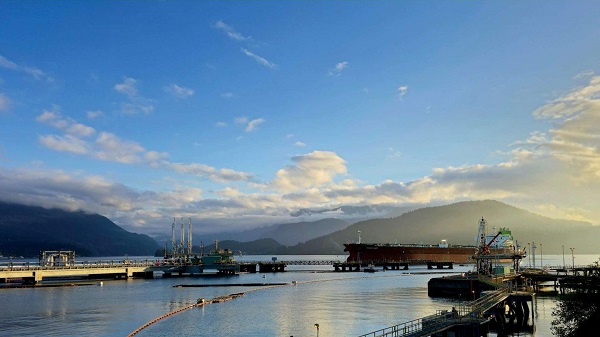
From the Canadian Energy Centre
Bigger project maintains decades-long marine safety record
The Trans Mountain system continues its decades-long record of zero marine spills, even as oil tanker traffic has surged more than 800 per cent since the pipeline’s expansion in May 2024.
The number of tankers calling at Trans Mountain’s Westridge Marine Terminal in the Port of Vancouver in one month now rivals the number that used to go through in one year.
A global trend toward safer tanker operations
Trans Mountain’s safe operations are part of a worldwide trend. Global oil tanker traffic is up, yet spills are down, according to the International Tanker Owners Pollution Federation, a London, UK-based nonprofit that provides data and response support.
Transport Canada reports a 95 per cent drop in ship-source oil spills and spill volumes since the 1970s, driven by stronger ship design, improved response and better regulations.
“Tankers are now designed much more safely. They are double-hulled and compartmentalized to mitigate spills,” said Mike Lowry, spokesperson for the Western Canada Marine Response Corporation (WCMRC).
WCMRC: Ready to protect the West Coast

One of WCMRC’s new response vessels arrives in Barkley Sound. Photo courtesy Western Canada Marine Response Corporation
From eight marine bases including Vancouver and Prince Rupert, WCMRC stands at the ready to protect all 27,000 kilometres of Canada’s western coastline.
Lowry sees the corporation as similar to firefighters — training to respond to an event they hope they never have to see.
In September, it conducted a large-scale training exercise for a worst-case spill scenario. This included the KJ Gardner — Canada’s largest spill response vessel and a part of WCMRC’s fleet since 2024.
“It’s part of the work we do to make sure everybody is trained and prepared to use our assets just in case,” Lowry said.
Expanding capacity for Trans Mountain

The K.J. Gardner is the largest-ever spill response vessel in Canada. Photo courtesy Western Canada Marine Response Corporation
WCMRC’s fleet and capabilities were doubled with a $170-million expansion to support the Trans Mountain project.
Between 2012 and 2024, the company grew from 13 people and $12 million in assets to more than 200 people and $213 million in assets.
“About 80 per cent of our employees are mariners who work as deckhands, captains and marine engineers on our vessels,” Lowry said.
“Most of the incidents we respond to are small marine diesel spills — the last one was a fuel leak from a forest logging vessel near Nanaimo — so we have deployed our fleet in other ways.”
Tanker safety starts with strong rules and local expertise

Tanker loading at the Westridge Marine Terminal in the Port of Vancouver. Photo courtesy Trans Mountain Corporation
Speaking on the ARC Energy Ideas podcast, Trans Mountain CEO Mark Maki said tanker safety starts with strong regulations, including the use of local pilots to guide vessels into the harbour.
“On the Mississippi River, you have Mississippi River pilots because they know how the river behaves. Same thing would apply here in Vancouver Harbour. Tides are strong, so people who are familiar with the harbor and have years and decades of experience are making sure the ships go in and out safely,” Maki said.
“A high standard is applied to any ship that calls, and our facility has to meet very strict requirements. And we have rejected ships, just said, ‘Nope, that one doesn’t fit the bill.’ A ship calling on our facilities is very, very carefully looked at.”
Working with communities to protect sensitive areas
Beyond escorting ships and preparing for spills, WCMRC partners with coastal communities to map sensitive areas that need rapid protection including salmon streams, clam beds and culturally important sites like burial grounds.
“We want to empower communities and nations to be more prepared and involved,” Lowry said.
“They can help us identify and protect the areas that they value or view as sensitive by working with our mapping people to identify those areas in advance. If we know where those are ahead of time, we can develop a protection strategy for them.”
-

 Energy2 days ago
Energy2 days agoA look inside the ‘floatel’ housing B.C.’s LNG workforce
-

 National2 days ago
National2 days agoAlberta will use provincial laws to stop Canadian gov’t from trying to confiscate legal firearms
-
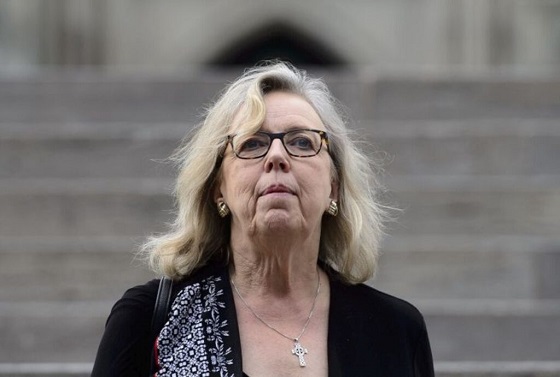
 Energy2 days ago
Energy2 days agoELZABETH MAY HAS IT WRONG: An Alberta to Prince Rupert Oil Pipeline Will Contribute to Greater Global Oil Tanker Safety
-

 illegal immigration1 day ago
illegal immigration1 day agoWhile Trump has southern border secure, hundreds of thousands of illegal immigrants still flooding in from Canada
-

 Censorship Industrial Complex1 day ago
Censorship Industrial Complex1 day agoCanadian bishops condemn Liberal ‘hate speech’ proposal that could criminalize quoting Scripture
-

 COVID-192 days ago
COVID-192 days agoCanadian legislator introduces bill to establish ‘Freedom Convoy Recognition Day’ as a holiday
-
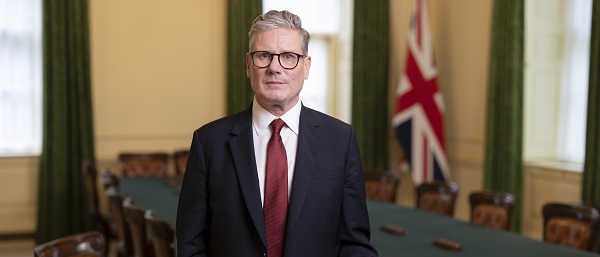
 Censorship Industrial Complex1 day ago
Censorship Industrial Complex1 day agoForeign Leaders Caught Orchestrating Campaign To Censor American Right-Wing Media Companies
-

 Business2 days ago
Business2 days agoUS Energy Secretary says price of energy determined by politicians and policies



